

MAY2024 MARKET REPORT
PreparedBy SteveCurran
Hi Everyone,
I hope that you are having a great spring and are enjoying your first place Seattle Mariners! Inventory levels and interest rates continue to be the dominant theme, impacting both local and national housing markets. We entered 2024 with almost unanimous consensus among the Wall Street “experts” that the Federal Reserve would begin an aggressive rate cutting campaign this year As many as 7 separate rate cuts were priced into the treasury and mortgage market, causing mortgage rates to fall from 7.80% at the end of October, down to 6.50% to start 2024. The consensus view breathed a sigh of relief, interest rates had spiked, but the Fed would soon send them sharply lower, predicting that mortgage rates would fall below 6.00% sometime this year. As I stated back in January, I struggled to see the full logic of the Federal Reserve embarking on an aggressive rate-cutting campaign with inflation remaining stubbornly high In order for interest rates to move lower, inflation would need to noticeably decline. I scratched my head, as I could not see any examples in real time within the economy of any price declines (outside of used car prices-mainly Teslas). Food is going up, energy prices are going up, labor is going up, all forms of housing costs are still going up Insurance costs alone in California, Texas, and Florida have made national headlines.
How could inflation fall under this scenario?
My frustration over the accuracy of the consensus view took me back to summer of 2016 and a market update I wrote that June entitled, Mortgage Rates To Reach 3% or 4% First?
"As NWG has stated for several years now, we continue to believe that interest rates will stay lower for longer than many market pundits believe. The recent Brexit news underscores international political and economic uncertainty that will continue to put pressure on our Federal Reserve to keep rates low Either our interest rates are too expensive, or global interest rates are too cheap. Something has to give. One thought process that we will continue to respectfully disagree with is the consensus notion that "interest rates have to rise." Why is that? Doesn't that ignore recent generational history, that interest rates have been falling in the United States for the better part of 30 years? Our opinion is that rates will rise when global economic activity warrants it, not because CNBC says so."
Three things stood out from that update:
1 The author sounded very young and handsome
2 At that time, the consensus view was the rates HAD to rise after 8 years of lower interest rates during and post the Great Financial Crisis.
3. Geopolitical headlines about Brexit and the 2016 election were on the minds of market participants back then. Today, we again have geopolitical risk, an election that promises to be at times cringe-worthy, and inflation (a word that was absent from the 2016 post)
The irony is that I am again on the opposite side of the consensus view, but today I am arguing the flip side of the coin. Since January we have been saying that rates will stay higher for longer and just like the quoted passage from 2016 we disagree with the consensus notion that "interest rates have to fall." Economic activity has been too strong and consumers have not yet been willing to pull back on their spending Sure we are all frustrated with the price increases of the previously mentioned goods, but saying I am frustrated with current prices and actually changing consumer habits are two entirely different events......as frustrated Mariner's fans can attest.
I continue to be thankful for the quality of readily available data on Twitter/X. These charts stood out to me and here is why:
Homebuyers have continued to show a tolerance for record high housing payments, as I type this report mortgage rates are hitting fresh 2024 highs at 7 52%, meaning the figure below will still be moving higher
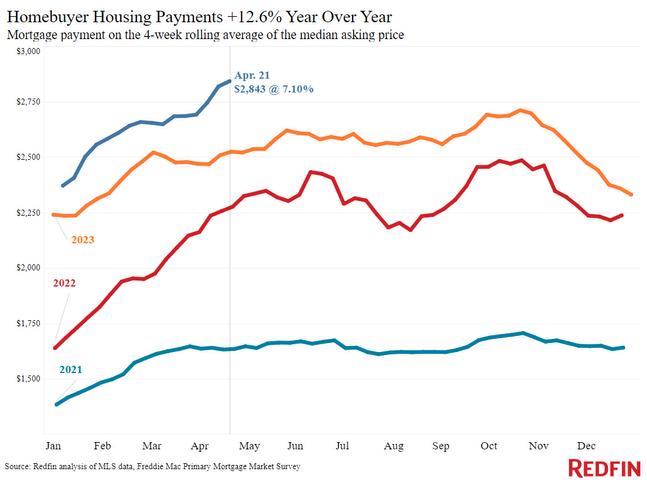
Given how quickly rates moved higher, it remains pretty impressive how well home prices have held up, in large part due to the lack of supply
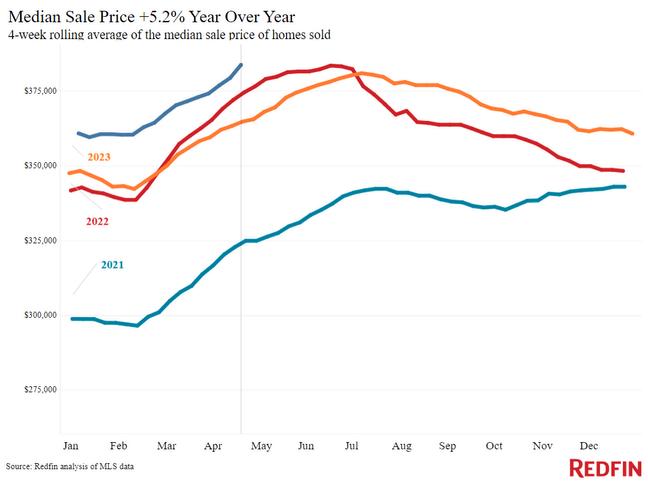
The combination of higher home prices and mortgage rates has pushed home affordability back down to levels not seen since Michael Jackson was on top of the charts. If home affordability does not improve in the coming years, this will likely become a larger political story in the 2028 election cycle as an increasing number of voters will be frustrated with the cost of housing
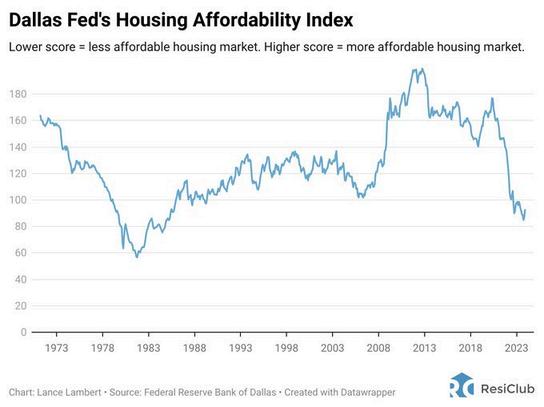
This chart will need to be monitored through the rest of the year The % of homes nationwide that have had a price reduction is moving higher during the seasonally strong FebApril time period. Is this an early sign that some markets throughout the country are starting to feel the dual impact of higher rates and increasing supply (some markets are seeing noticeably higher inventory levels)?
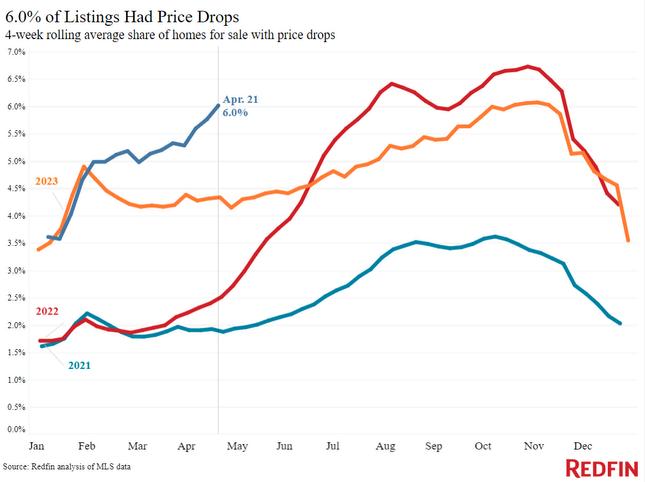
The trajectory on this chart resembles my heart rate when pulling into the Dairy Queen parking lot. Due to an expanding deficit and the sharp rise in Treasury interest rates, Uncle Sam is having to pay significantly higher costs to finance our government's debt. It is simply staggering that our current interest expense exceeds not only all military spending, but the combined interest payments during both the Great Financial Crisis and Covid, when record setting spending packages were being released on what seemed like a weekly basis. This is simply unsustainable.
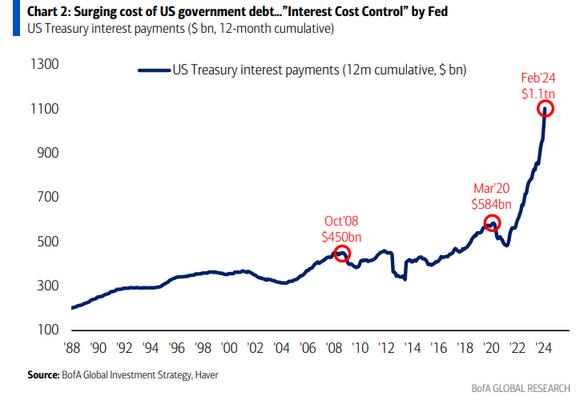
This chart shows Wall Street traders bets on how many times the Federal Reserve will cut rates in 2024 This forecast was about as accurate as my Mariner's predictions!
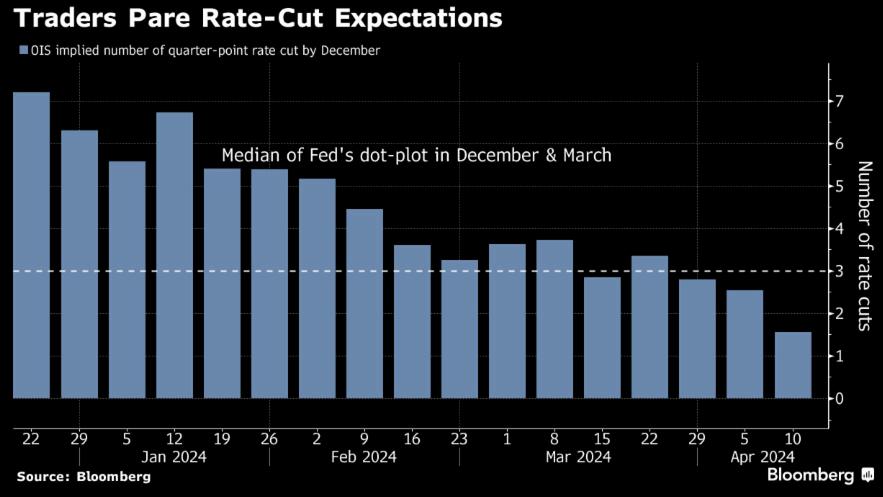
The impact of working from home, hybrid work schedules, and Covid era relocations continue to hammer commercial real estate and many regional banks. How this fully plays out still remains to be seen. I bumped into a little league parent I know the other day who is a prominent eastside commercial broker. When I asked him for his thoughts on the market, let's just say I can't put them in print because this is a PG column. It is pretty amazing (and sad) that San Francisco has gone from the lowest commercial vacancy rate in the country to the highest in a four year period.
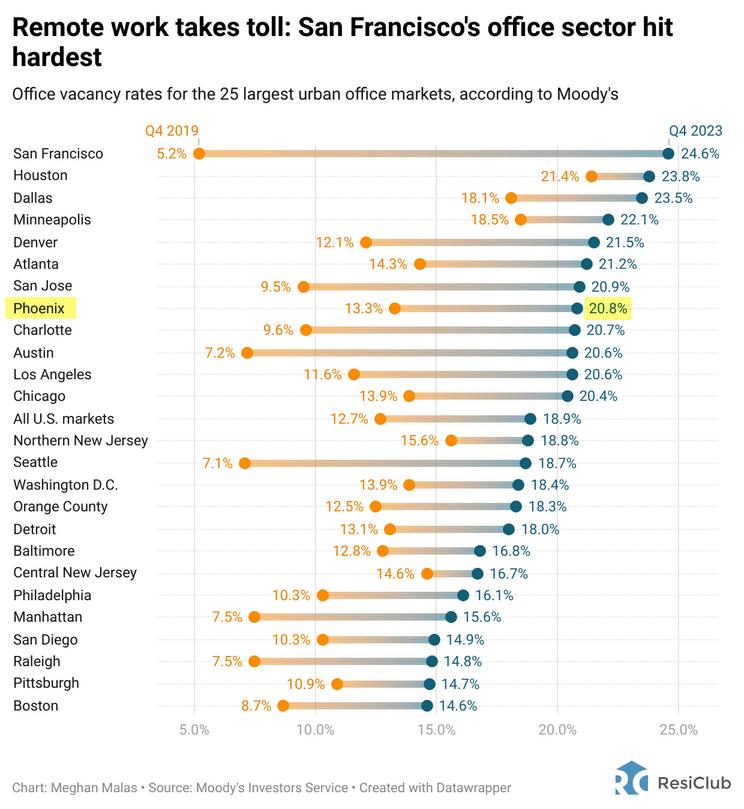
As spring heads towards summer, the only catalyst that I can see that will drive rates noticeably lower would be the economy rolling over and layoffs beginning and then increasing Current consumer prices feel entrenched, nobody wants to spend $18 at Chipotle but we are still doing it Until the consumer either elects to pullback or is forced to pullback due to increased concern about employment prospects, it is hard to see prices for goods and services coming down The Fed is likely even speaking in hushed tones about the potential need for another rate increase, an outcome that Wall Street literally did not even consider as recently as a month ago. Rates will be higher for longer, until economic activity declines. My encouragement for every reader is to carefully evaluate whether the consensus opinion squares with the reality we see in real time. Sometimes the most likely economic outcome is also the most straightforward. One of these years my Mariner's predictions will come true! I just hope I'm still around to see it.
As always, please let me know if you have any questions or comments about my post
All the best,
Steve

